
AI created the calendar 2024
Calendar 2024 united AI and artists of the twentieth century
We present to you the project of the corporate calendar of 2024.
This project is more than a branded souvenir. We want our calendar to become an occasion to see all the diversity of the world and art.
Our work is a constant creative search for technical solutions that allow us to be at the right point at the right time, and to find the optimal solution in the modern world requires an open, non–standard view of the tasks.
Therefore, to create a calendar, we turned to the creative world of artists as a metaphor for the complex and constantly changing modern world. After all, creative imagination is not limited by anything. And, on the other hand, we used the most modern method of working with artistic material: we integrated our rolling stock into the imaginary world of paintings with the help of artificial intelligence! Thus, the project combines tradition and innovation.
For the calendar, we have selected 12 famous paintings painted by different artists at different times of the 20th century. In whatever place and in whatever style the canvas was painted, we found a way to deliver our wagons there.
This may be perceived as a joke, but it is also a game metaphor of how innovative approaches and tools allow you to find a simple solution to the most complex logistical tasks.

Calendar cover
Andy Warhol (1928-1987)
"Marilyn Monroe"
American artist, producer, designer, writer, magazine publisher and film director, the "king of pop art" and contemporary art in general. The sixties became the time of Andy Warhol, when the image of Coca-Cola bottles and dollars under the motto "draw what you love most in the world" became an example for dozens of imitators. Warhol didn't just turn the very concept of art upside down. He erased the boundaries between high and low culture, replacing it with popular culture.
The repeatedly replicated portrait of Marilyn Monroe in 1962 was created in the year of her death. We see an image, not a living person: the touching Norma Jean Baker is carefully hidden behind the mask of a brilliant Marilyn with scarlet lips, a platinum mane and a seductive mole. Warhol fixes her face for eternity, avoiding any manifestation of human individuality.

January
Kazimir Malevich (1879-1935)
"Three heroes"
Soviet avant-garde artist of Polish origin, teacher, art theorist, philosopher. The founder of suprematism — one of the largest trends of abstractionism. During his life as the face of the Russian avant-garde, Kazimir tried many styles of painting: neo-primitivism, symbolism, impressionism, futurism, Cubism, and these are just some of them. However, none of these styles really reflected the artist's view of reality. Thus, he invented his own movement – suprematism. He not only applied the principles of suprematism to his painting, but also transferred them to other areas of art, including architecture, cinema and design.
Before becoming one of the most popular and influential artists of the twentieth century, the future founder of suprematism was considered hopeless and incompetent. Having accepted the challenge, Kazimir turned into his own unique master, whose works were much more diverse than almost everything created by his peers.
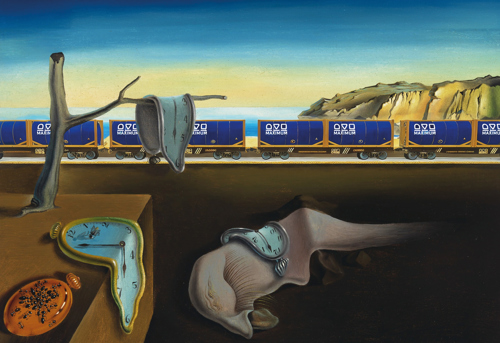
February
Salvador Dali (1904-1989)
"Persistence of memory"
Spanish painter, chart, sculptor, director and writer. Dali is the author of more than 1,500 works of art: paintings, illustrations, lithographs, graphics, sculptures, theater sets and costumes, jewelry. He can rightly be called the greatest surrealist. Streams of consciousness, dreams and reality were reflected in all his works.
"The Persistence of Memory" (1931) is one of the smallest (24x33 cm), but the most discussed of his paintings. This canvas stands out with a deep subtext and a lot of encrypted characters. And it is also the most copied work of the artist.
The main image of this picture is the current time. A soft clock on the table, as a symbol of nonlinear, subjective time, arbitrarily flowing and unevenly filling the space. So the artist expressed the relativity of time and emphasized the amazing property of human memory, for which there is no past, present and future.
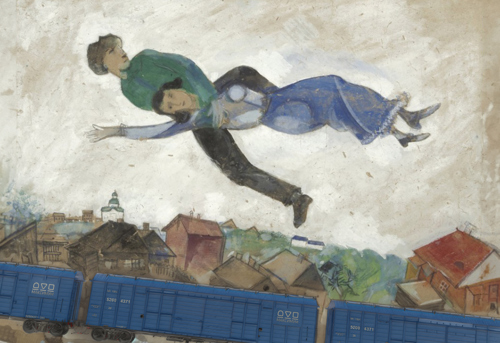
March
Marc Chagall (1887-1985)
"Over the city"
Russian and French artist of Jewish origin. A modernist artist, he created works in a wide range of formats: paintings, drawings, book illustrations, stained glass windows, decorations, ceramics, tapestries and fine art prints. Chagall did not join associations and groups. He believed that there was no direction in his painting, but only "colors, purity, love." He lived 97 years and created his own unique style of painting. Chagall's work has become a symbol of freedom and naturalness of art. Unwilling to follow the trends of his time, the artist nevertheless managed to achieve recognition during his lifetime.
The painting "Over the City" was painted in 1918. The love theme in Chagall's work is invariably connected with the image of his beloved and wife Bella, whom he painted all his life. It is believed that the painting is made in the style of cubism. Marc Chagall portrayed himself as "cubized", angular, consisting of smooth, clear lines. Bella, on the contrary, is depicted with soft outlines with special grace.
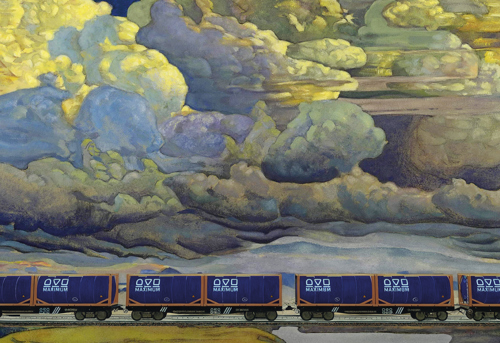
April
Nicholas Roerich (1874-1947)
"Heavenly Battle"
Russian artist, set designer, thinker, writer, traveler, archaeologist, public figure. Academician of the Imperial Academy of Arts. During his life he created about 7000 paintings, many of which are in famous galleries of the world, and about thirty volumes of literary works. The author of the idea and initiator of the Roerich Pact, the founder of the international cultural movements "Peace through Culture" and "Banner of Peace".
The 1912 painting "Heavenly Battle" depicts a powerful battle of clouds, a battle between light and darkness, and the preponderance of light is felt — the victory of the solar dawn. The landscape in Roerich's painting has a special character. The artist does not depict any particular corner of the earth that he loves, his landscape is planetary. The earth is in its primeval state, as a particle of the vast incomprehensible infinite cosmos. Roerich sees creation in the integrity and spirituality of everything earthly and heavenly.
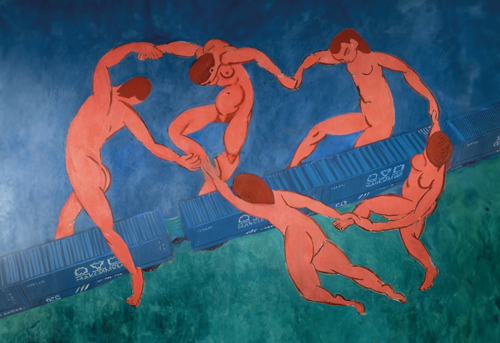
May
Henri Matisse (1869-1954)
"Dance"
French painter, draughtsman, engraver and sculptor, one of the main European artists of the period modernism. He entered the history of art with his desire to convey emotions through form and color. One of the founders and leading representatives fauvism.
Fauvism was characterized by a riot of colors that shocked any connoisseur of art and caused a powerful wave of indignation. Experts said that it is an impossible primitivism to use only three colors in the work. The founding artists of this style were called Fauvists, that is, savages.
The panel "Dance" (1910) was painted by Henri Matisse on the order of the Russian philanthropist Sergei Shchukin for his mansion. According to the idea of the author and the customer, the picture conveys a sense of lightness and openness. Five female figures fascinate with their naturalness. Matisse was inspired by folk dances, Greek vases and productions of Russian seasons by Sergei Diaghilev.

June
Petrov-Vodkin (1878-1939)
"Fantasy"
Russian and Soviet painter, graphic artist, art theorist, playwright, writer and teacher, Honored Artist of the RSFSR. One of the key figures in the culture of the 1920s-30s: painter, writer, art theorist, teacher, whose students considered themselves part of the Petrov-Vodkin school. Combining the ideas of European decadence with the Russian school of painting, post-Impressionist painting with iconography and Renaissance art, Petrov-Vodkin created his own synthetic manner of displaying the universe in its comprehensive cosmic completeness.
The symbolic image of the red horse became the key in the work of Kuzma Petrov-Vodkin. The painting "Bathing of the Red Horse" presented at the 1912 exhibition was a stunning success. In 1925, another picture appeared – "Fantasy", where a young rider on a red horse is in the center. Everyone notes the similarity of the young rider on a red horse with the image of St. George in the ancient iconographic symbolism, which the artist studied, creating his innovative style in fine art.
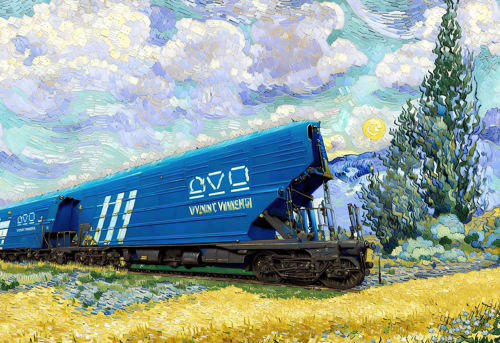
July
Vincent Van Gogh (1853-1890)
"Wheat field with cypress"
Dutch post-impressionist painter, whose works had a timeless influence on the painting of the XX century. In a little over ten years, he has created more than 2,100 works, including about 870 oil paintings. Among them are portraits, landscapes, still lifes, panels. The artist's life was full of emotions and mental disorders. During his lifetime, not a single painting was sold, he lived on his brother's funds, which greatly depressed Vincent. And only years after his tragic death, the world appreciated his unique work. Today he is recognized as one of the most important and expensive artists of all time. Van Gogh created an artistic language that was developed in expressionism and Cubism.
"Wheat field with cypress" (1889) — a picture from a series of 4 wheat fields. The artist was inspired by the view from the window of the asylum for the mentally ill on the Alpine foothills. The painting is very unusual even among Van Gogh's other canvases: here for the first time a characteristic expressiveness appears. "I painted a grain field — very yellow and very light; this is probably the lightest of all my canvases. Cypresses still fascinate me," the artist wrote in one of his letters to his brother.
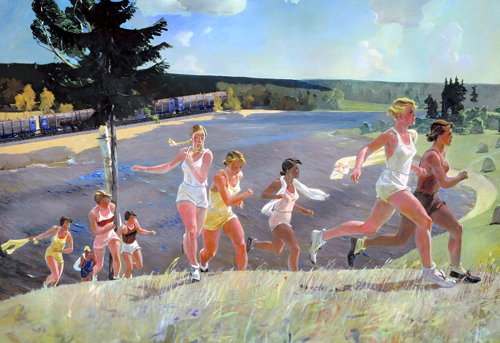
August
Alexander Deineka (1899-1969)
"Expanse"
Soviet painter, muralist, graphic artist, sculptor, teacher. Alexander Deineka is a unique figure of the Russian artistic culture of the twentieth century, an active participant in its dramatic collisions. Reality dictated its cruel rules to him, but perhaps no one else changed the polarity of his work so dramatically. At first, he was close to modernism, but later became one of the pillars of socialist realism, known for his large-scale canvases depicting the daily life of the Soviet Union, often in an idealized form. His works combine the strict formalism of classical art and the spirit of Soviet realism.
The painting "Expanse" (1944) is a product of the mature period of Deineka's work, when he focused on glorifying Soviet life. Since childhood, he was fond of sports, he easily grasped the dynamics of movements, giving them a special lightness, carelessness and beauty.
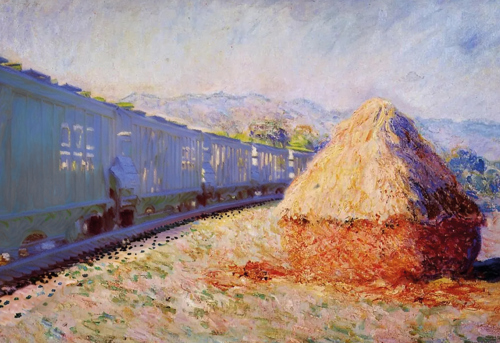
September
Claude Monet (1840-1926)
"Haystacks at the end of the day. Autumn."
French painter, one of the founders of Impressionism (from fr. Impression-impression). The artist himself has been writing all his life, following exactly this direction in painting. He liked to repeat that his super task was impossible — he wanted to draw the light himself! For almost forty years, impressionism has been resolutely rejected, exposed as a reckless phenomenon in traditional classical French art. Today, the artist ranks third in the list of the most "expensive" painters of all time.
Two haystacks in the fields near the village of Giverny inspired Monet to create a series of 31 paintings (1888-1891). The artist wanted to capture the same object in different lighting conditions, at different times of the year and in different weather. Depending on the light and the state of nature, the stacks in the paintings are gray and pink, yellow, blue and even purple — such as the artist saw them.
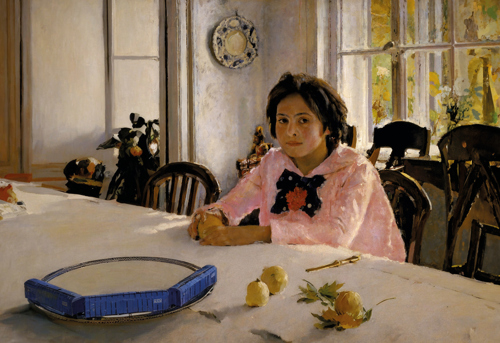
October
Valentin Serov (1865-1911)
"The girl with peaches"
The Russian painter and graphic artist, became famous as an astute portraitist, who had many titled persons and cultural figures make orders. But the work of the talented master was not limited to portraits alone: he created genre paintings, historical illustrations, works on a mythological theme. The founder of Russian modernism at the turn of the XIX—XX centuries. Academician and full member of the Imperial Academy of Arts.
"The Girl with Peaches" (1887) became a special work that marked the arrival of impressionism in Russia. Although at the time of painting the artist was only 22 years old, by this time he already had considerable artistic experience. The main distinguishing feature of the painting is that the artist managed to literally stop the moment and capture it as if it had just happened. And it was incredible, because the model Vera Mamontova had to pose for the artist for several months, patiently remaining in the same pose and with the same facial expression.
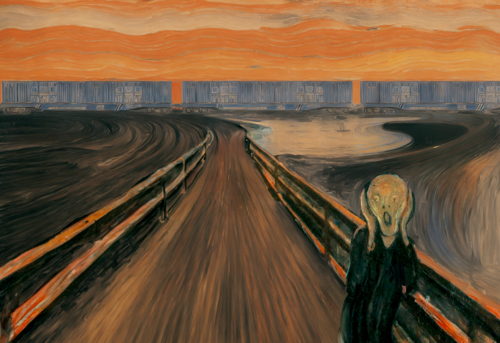
November
Edvard Munch (1863-1944)
"Scream"
Norwegian painter, graphic artist, one of the first representatives of expressionism. Expressionism is a bright artistic trend of the beginning of the XX century, it strives not so much to reproduce reality as to express the emotional state of the author. The excessive, exaggerated emotionality of this style was a painful reaction to the ugliness of civilization at the beginning of the XX century, the First World War and revolutionary movements.
Edvard Munch was a nervous man, his work is covered by the motives of death and loneliness. He was afraid of nature, all his life he and his loved ones were haunted by death and illness, and relationships with women led the artist to depression.
The famous painting "The Scream", which was originally called "The Cry of Nature" (1893) depicts a screaming sunset. The blood-red sunset caused the artist horror and despair.
In 2012, the painting was sold for $ 120 million. setting a world record for cost.
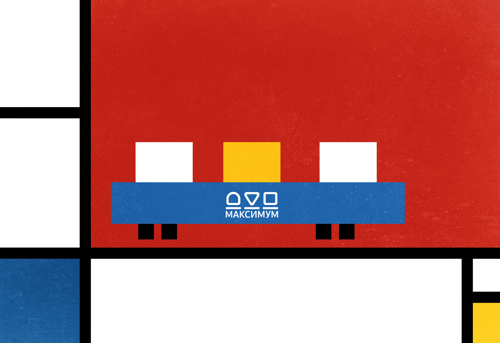
December
Piet Mondrian (1872-1944)
"Composition II"
Dutch artist, pioneer of abstract art. Mondrian is best known for his works of the early 20s of the last century, where he simplified all forms to horizontal and vertical lines. The artist filled the resulting rectangles with the main colors of the palette. Pete presented his sense of the world in the form of a pair of opposites: vertical and horizontal, plus and minus, dynamics and statics, masculine and feminine. His work had a significant impact on the development of abstract art and minimalism. Stained glass windows based on his paintings became the main decoration of the Rumyantsevo metro station in Moscow.
At the New York auction of Sotheby's "Modernism" on November 14, 2022, an auction record price was set for the work of Pete Mondrian: his painting "Composition No. II" (1930) sold for $51 million. The last time "Composition No. II" appeared at auctions was in 1983, when a Japanese collector bought it for $ 2.2 million, that is, in forty years the painting has risen in price more than twenty times.

 Заказать
Заказать Personal
Personal















